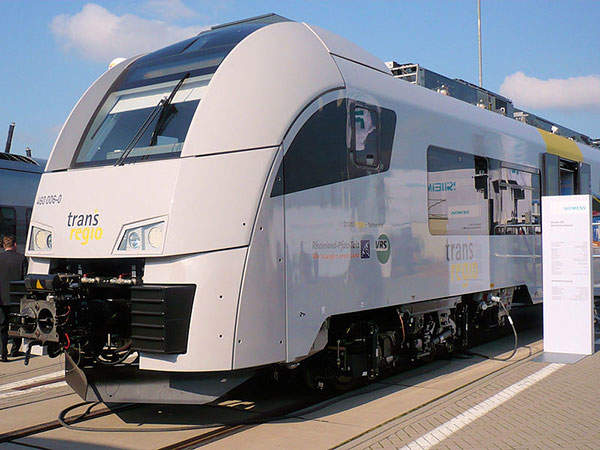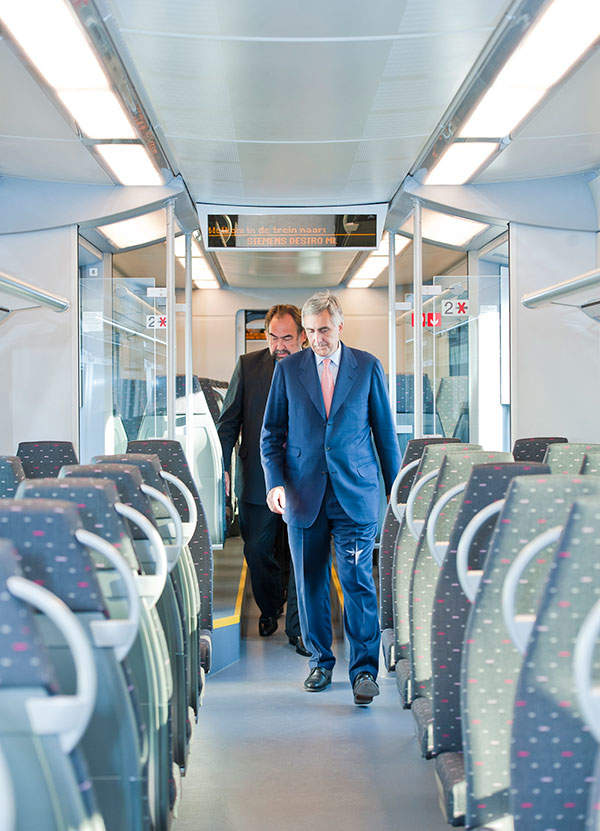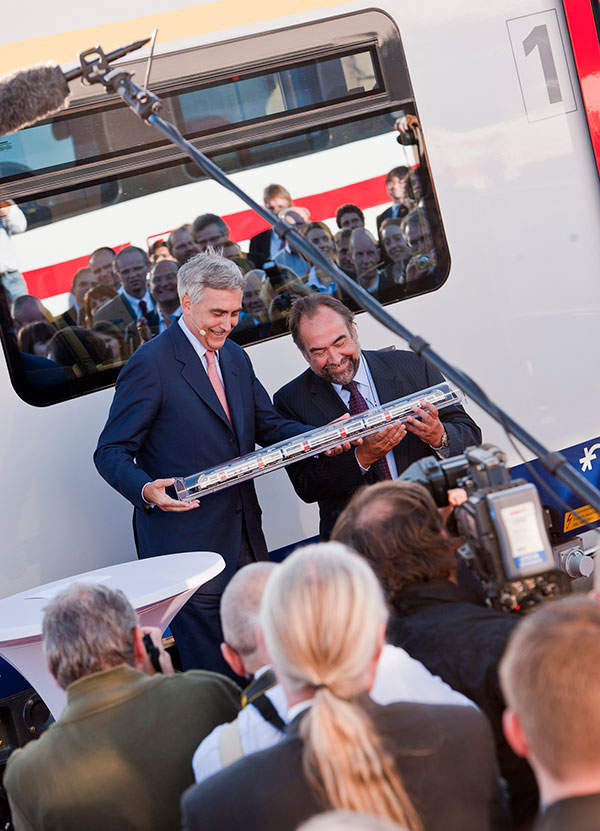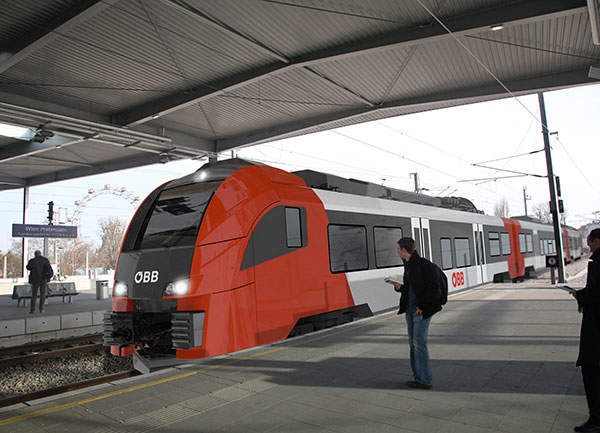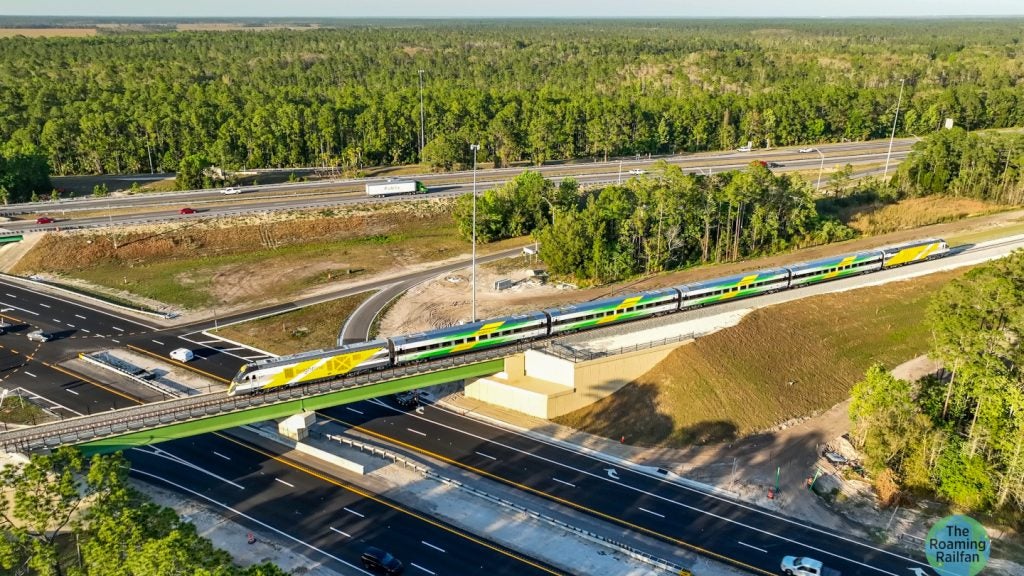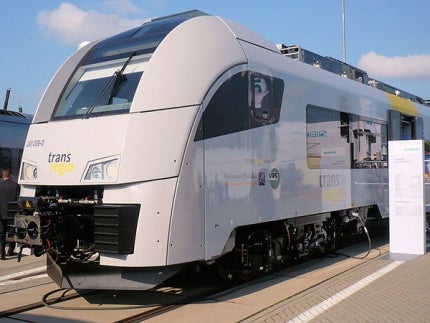
Desiro Main Line (ML) is an addition to Siemens’ Desiro platform of commuter trains. The Desiro class represents a variety of electric or diesel trains with multiple units designed especially for shorter routes.
Desiro ML is designed for commuter, regional and inter-regional rail links. It is designed on a ‘single car’ concept that offers lower maintenance costs.
Some of the the major features of the Desiro class rolling stock include flexible configuration to meet different passenger capacities, greater passenger comfort, greater energy efficiency and cost effectiveness.
Desiro ML made its debut at the international Trade Fair Innotrans 2008, held in Berlin. The rolling stock is in use in Germany, Austria and Belgium.
Variants of the Desiro class rolling stock
Desiro trains are available in both electric multiple unit (EMU) and diesel multiple unit (DMU) versions. The first class of Desiro trains known as Desiro Classic were introduced in 1996. More than 550 units of Desiro Classic are currently in operation in ten countries.
In 2002, another class of trains from the Desiro family was introduced especially for UK operators. More than 380 units of Desiro UK are currently in operation in UK and Thailand.
Desiro ML was created in 2008, based on the proven platforms of Desiro Classic and Desiro UK, with certain added features.
Two other variants of Desiro class have been introduced subsequently, which include the Desiro City (high-capacity light weight commuter EMU for the UK market) and the Desiro RUS (broad gauge electric commuter train for Russian Railways).
Design of Desiro ML trains
Desiro ML has been designed as a single-car train with low-axle loads. The basic design of Desiro ML allows for variable train lengths with easy addition or removal of the cars in the centre. Train length of different configurations of Desiro ML varies between 48.4m (two-car) and 93.3m (four-car).
Desiro ML offers lower floor height, which is either 600mm or 800mm. The number of doors for each car can be configured as per need.
The body of Desiro ML is manufactured from lightweight aluminium that complies with crash resistance specifications. The bogies are derived from Siemens’ SF 6000 family and are equipped with secondary air suspension.
Desiro ML class train interiors
Desiro ML also features modular interior design. Its interior features heat-insulated windows, ergonomic shape seats, and adequate luggage racks. The air-conditioning equipments and diesel generators in case of DMUs are mounted on the roof.
Related project
Siemens Velaro High Speed Trains, Germany
Velaro is the world’s fastest high-speed train, developed by Germany-based company Siemens. The trains are manufactured at the Krefeld-Uerdingen factory in Germany. They could be a potential alternative to aircraft and cars in future.
Propulsion, traction and braking systems fitted in Desiro ML
Each motor car of the Desiro ML rolling stock features four semi-suspended 325kW asynchronous motors that give a starting acceleration of up to 1.1m/s2.
The EMU version of Desiro ML offers up to 2,600kW of traction power with eight powered axles. The DMU version offers 1,000kW of traction power with four powered axles. The traction package of the rolling stock has been designed to operate on different voltage systems, such as 15kV AC, 25kV AC and 3kV DC.
Desiro ML is equipped with regenerative braking system along with disc brakes and magnetic track brakes.
Signalling and control systems equipped in the Desiro ML
The rolling stock has been designed to adapt to different signalling and ATP systems. It is equipped with Sibas 32 train control system.
Desiro ML train performance and maintenance
The operator has the flexibility to configure Desiro ML as per the transport capacity needs and traction systems. The train can be optimally used for commuter, regional and inter-regional services.
It can be operated at a maximum speed of 160km per hour with a passenger capacity of up to 384. Being based on single-car concept, Desiro ML involves fewer components that results in lower maintenance cost. The short wheelbase of the bogie also reduces wear and tear. The low boarding height of Desiro ML is convenient for riders with impaired mobility.
Energy efficiency is one of the major features of Desiro ML. The DMU version of Desiro ML, for instance, consumes 35% less fuel compared to a conventional diesel engine train, due to the innovative energy storage system.
Orders and deliveries of Desiro ML rolling stock
Angel Trains International was the first customer for Desiro ML trains. It ordered 16 Desiro ML trains for €70m ($93m) in 2007.
SNCB/ NMBS of Belgium ordered 95 Desiro ML trains for the Brussels RER network, in May 2008. The original contract was worth €1.42bn ($2.21bn) for procuring a total of 305 Desiro ML trains between 2011 and 2016, but the order for additional 210 trains was suspended in early 2013.
In January 2010, Russian Railways awarded a contract worth €410m ($568m) for 38 Desiro ML trains to be used during 2014 Olympic Games in Sochi.
In April 2010, Siemens signed an agreement with Österreichische Bundesbahnen (ÖBB) of Austria to supply up to 200 Desiro ML EMUs. In January 2013, Siemens was awarded a contract worth €550m ($743m) to supply 100 Desiro ML three-unit trains as part of this agreement.
ÖBB will use 30 of these trains with seating capacity of 244 each for mass transit service in Austrian capital of Vienna and Lower Austria. It will use 70 trains with seating capacity of 259 each for regional services in Upper Austria and Styria.
The trains will be delivered to Austria starting from late 2015.

